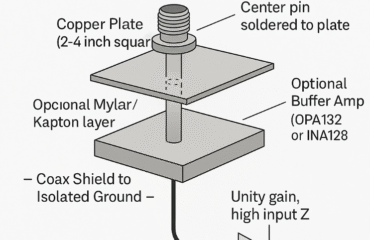
Why Narrowband Cant Produce V2k
🧠 Can Narrowband Signals Trigger the Frey Effect?
Why a Single Tone Fails, but a Coherent RF Comb Can Succeed
The Frey effect, also known as the microwave auditory effect, is real and scientifically documented. It allows a human to perceive sound through pulsed microwave radiation—without using the ears.
But there’s a widespread misconception in both TI and RF communities:
That any narrowband RF signal — such as a CW tone or ultra-narrow comb — could trigger this effect.
The reality is more complex and rooted in biophysics and time-domain electromagnetics.
Let’s break it down.
🔬 What the Frey Effect Really Requires
The Frey effect is caused by:
- Thermoelastic expansion in tissue
- Triggered by short, rapid RF pulses
- Causing pressure waves in the skull
- Which are heard by the cochlea or perceived directly
📚 A. H. Frey, “Human Auditory System Response to Modulated Electromagnetic Energy,” J. Appl. Physiol., 1962
https://doi.org/10.1152/jappl.1962.17.4.689
🧠 Bottom line: The body doesn’t hear frequency—it hears pressure transients caused by fast thermal events.
❌ Why Narrowband Signals Fail
A continuous-wave (CW) or ultra-narrow signal — no matter the frequency — cannot generate sharp pressure pulses.
| Property | CW / Narrowband Signal |
|---|---|
| Rise Time | Slow (seconds to ms) |
| Thermal Gradient | Minimal |
| Tissue Expansion | Gradual |
| Pressure Spike | ❌ Absent |
| Audible Effect | ❌ None |
📉 Example: A 0.1 Hz wide carrier has a rise time of ~10 seconds (1/BW). That’s thousands of times too slow to create a usable thermoelastic effect.
🔍 It’s not about frequency alone — it’s about time-domain behavior.
✅ But What About a Comb of Narrow Teeth?
Now this gets interesting.
A frequency comb consists of many narrowband tones spaced evenly across a range. Individually, each “tooth” is narrow and weak.
But together, and if coherently summed, they can simulate pulsed RF with properties ideal for Frey-type stimulation.
🧩 Fourier Duality: Pulse Trains ↔ Frequency Combs
Mathematically:
- A perfect frequency comb (with equal spacing and phase) ↔ a periodic pulse train in the time domain.
- The narrower each tooth is, the longer the pulse envelope — but the spacing defines the pulse repetition frequency (PRF).
📈 Example:
- 240 tones spaced by 10 kHz = PRF of 10 kHz
- Perfectly phase-aligned → periodic RF bursts at 10 kHz
- ✅ Matches the optimal auditory sensitivity for thermoelastic activation
📚 Bracewell, R., “The Fourier Transform and Its Applications”, McGraw-Hill
https://web.stanford.edu/class/ee261/
🔬 So What’s the Catch?
A frequency comb only triggers the Frey effect if:
| Requirement | Why It Matters |
|---|---|
| ✅ Phase Coherence | Required to form time-domain pulse |
| ✅ Spacing in Audio Band | Determines PRF (4–15 kHz ideal) |
| ✅ Wide enough Total Bandwidth | Must excite tissue absorption |
| ❌ Random Phase | Smears into noise, no pulses |
| ❌ Static Envelope | No pressure spikes, no acoustic wave |
✅ When a Comb Does Work
| Comb Type | Frey Effect Potential | Notes |
|---|---|---|
| CW carrier (single tone) | ❌ No | No pulse, no heating transition |
| Randomized comb (incoherent) | ❌ No | Spectral mush, no transient energy |
| Coherent comb (audio spaced) | ✅ Yes | Summed pulse train in time domain |
| Gaussian-shaped coherent comb | ✅ Yes | Smooth modulation with peak bursts |
| Comb with pulsed envelope | ✅ Strong | Direct heating pulses; ideal case |
📚 Lin, J.C., “Auditory perception of RF energy: The microwave hearing effect”, Bioelectromagnetics, 2001
https://www.ncbi.nlm.nih.gov/pubmed/11782799
🧠 Final Word: The Envelope Is Everything
You could broadcast a 1.33 GHz carrier at high power all day and no one would hear anything — unless it’s modulated in time to create acoustic-pressure waveforms inside the skull.
But if you take a comb of even weak, narrowband teeth and:
- Space them correctly
- Align their phase
- Possibly apply a Gaussian or pulsed envelope
Then yes — ✅ you can create enough rapid thermal expansion to stimulate the Frey effect.

